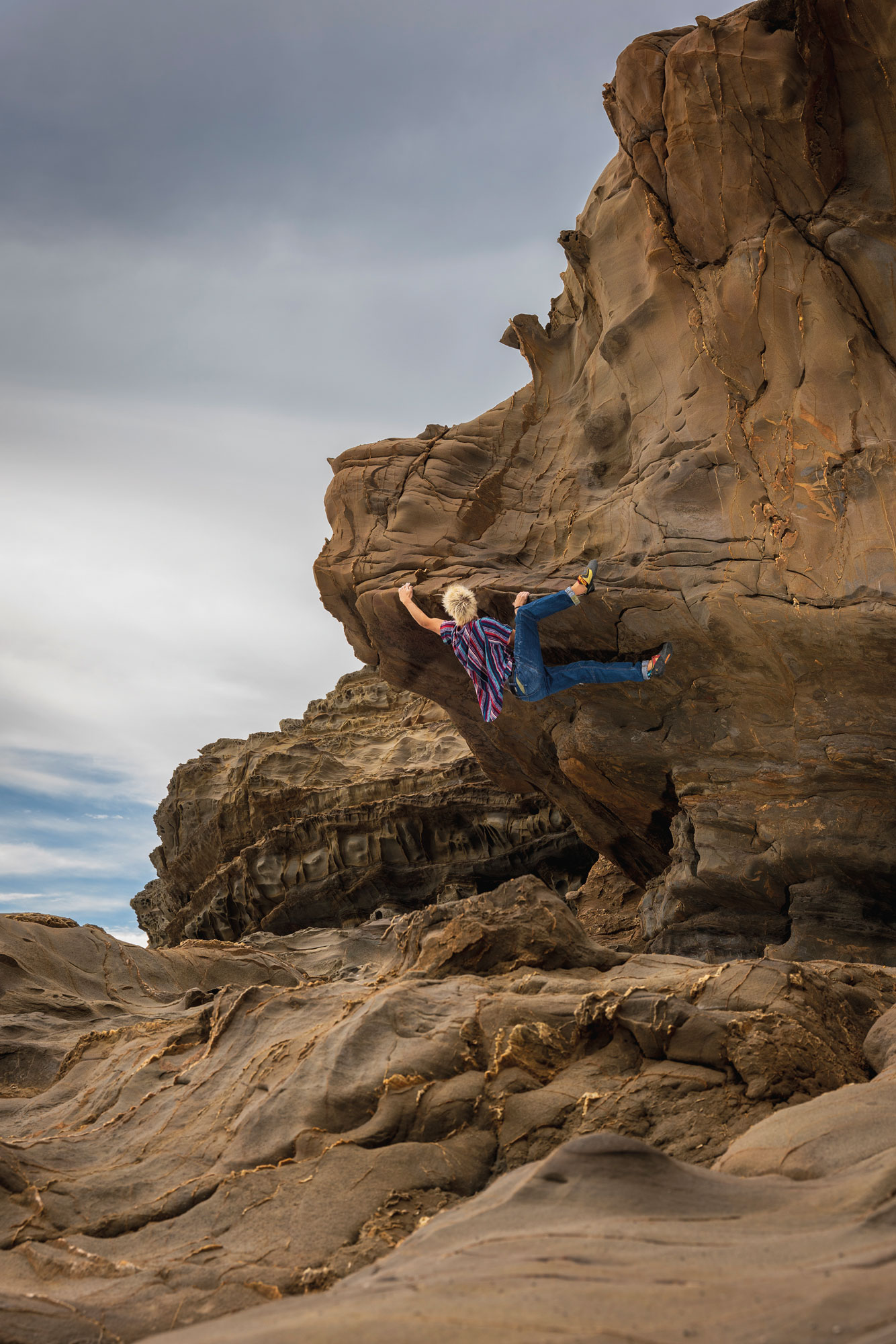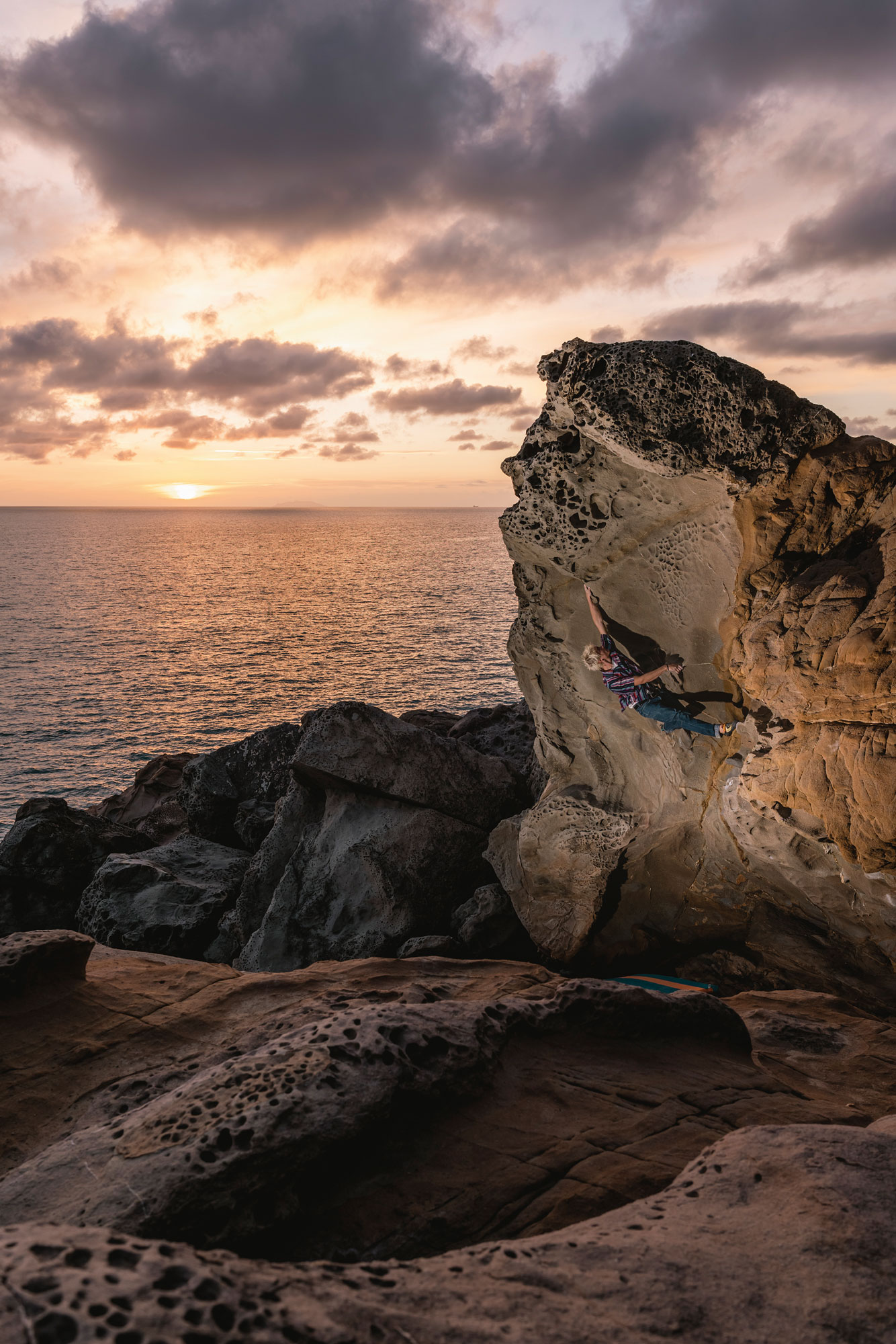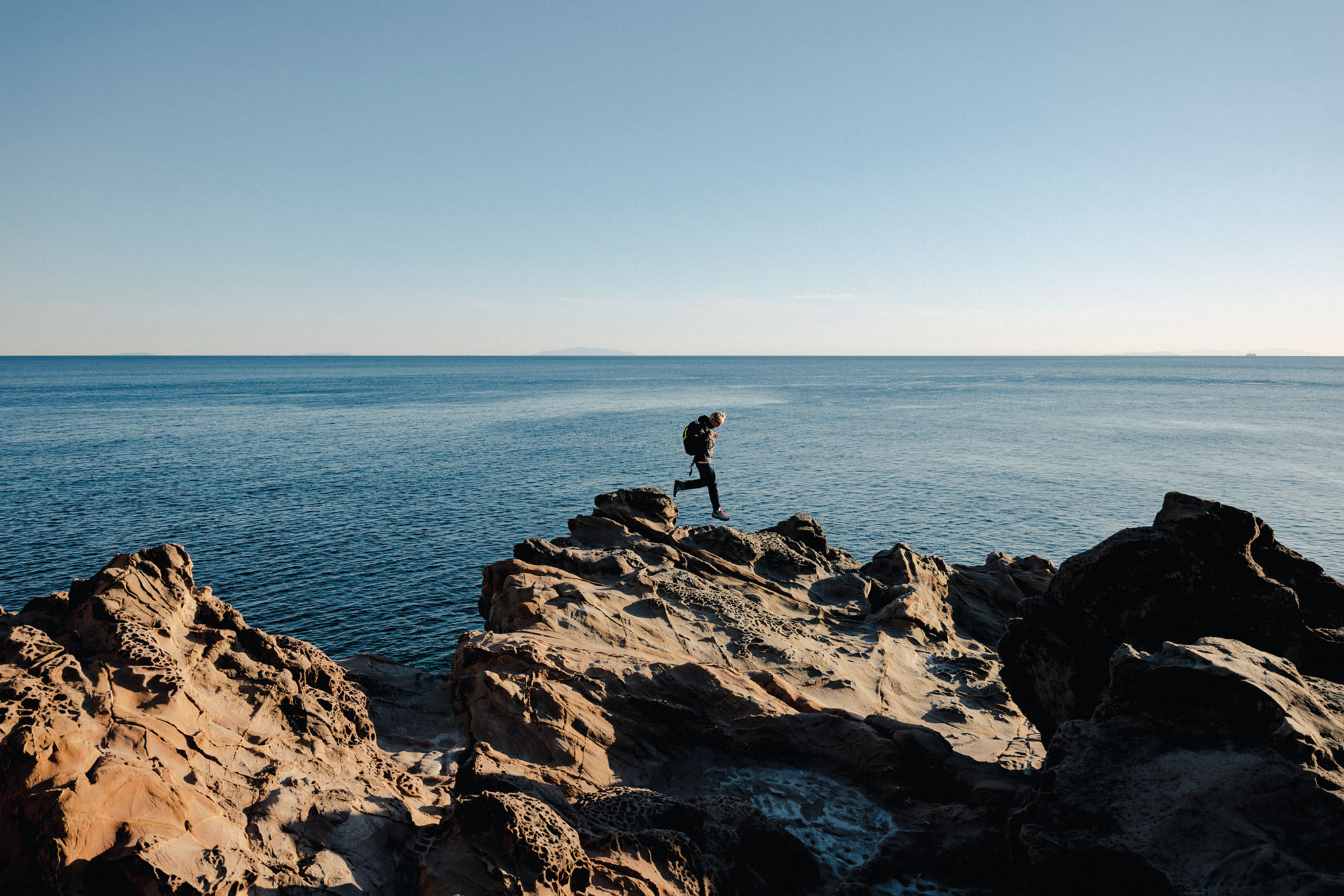
From rock to waves and back
A photographer and a climber compose a visual story that draws a line that unites surfing and climbing in a series of shots that have become an exhibition.
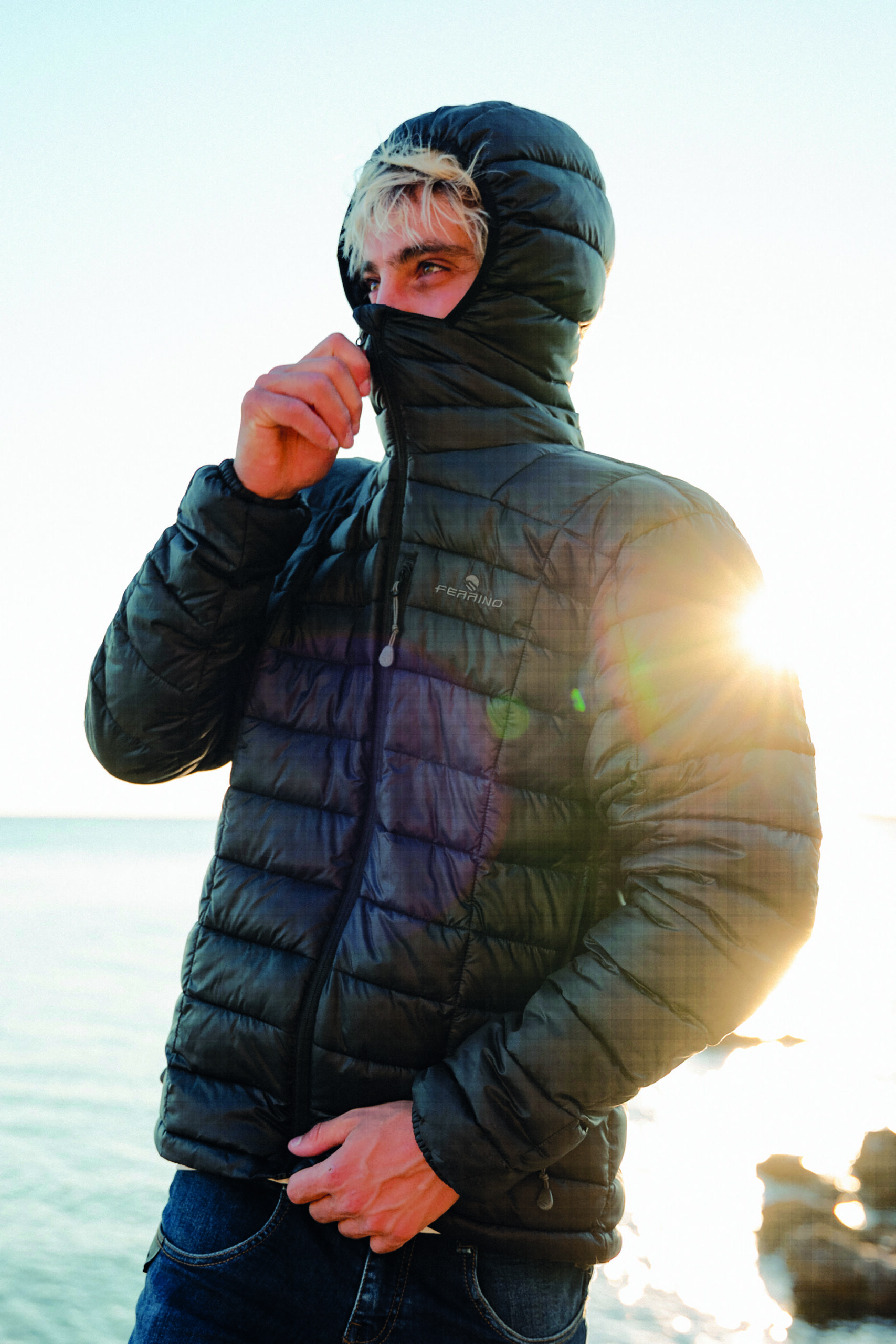
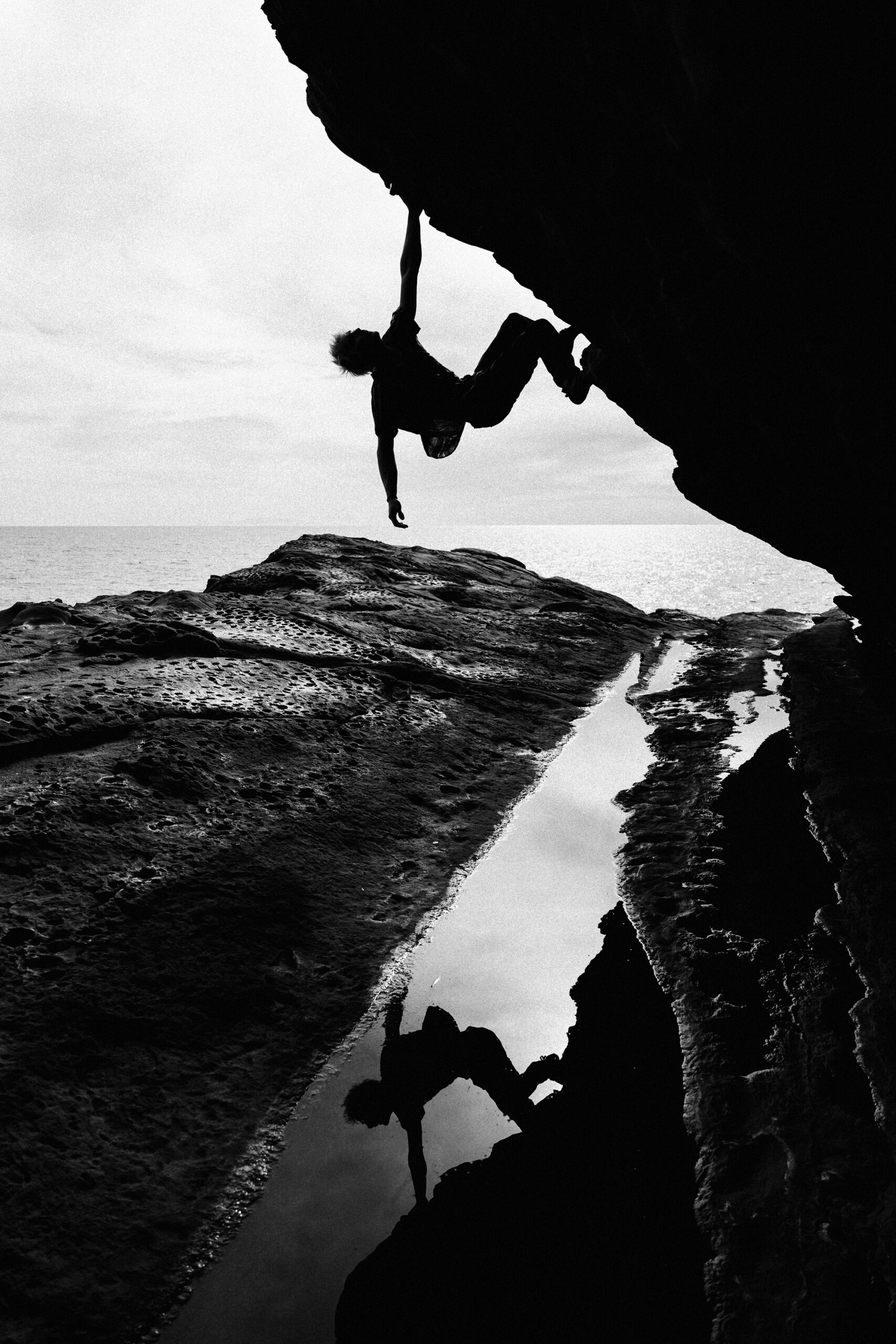
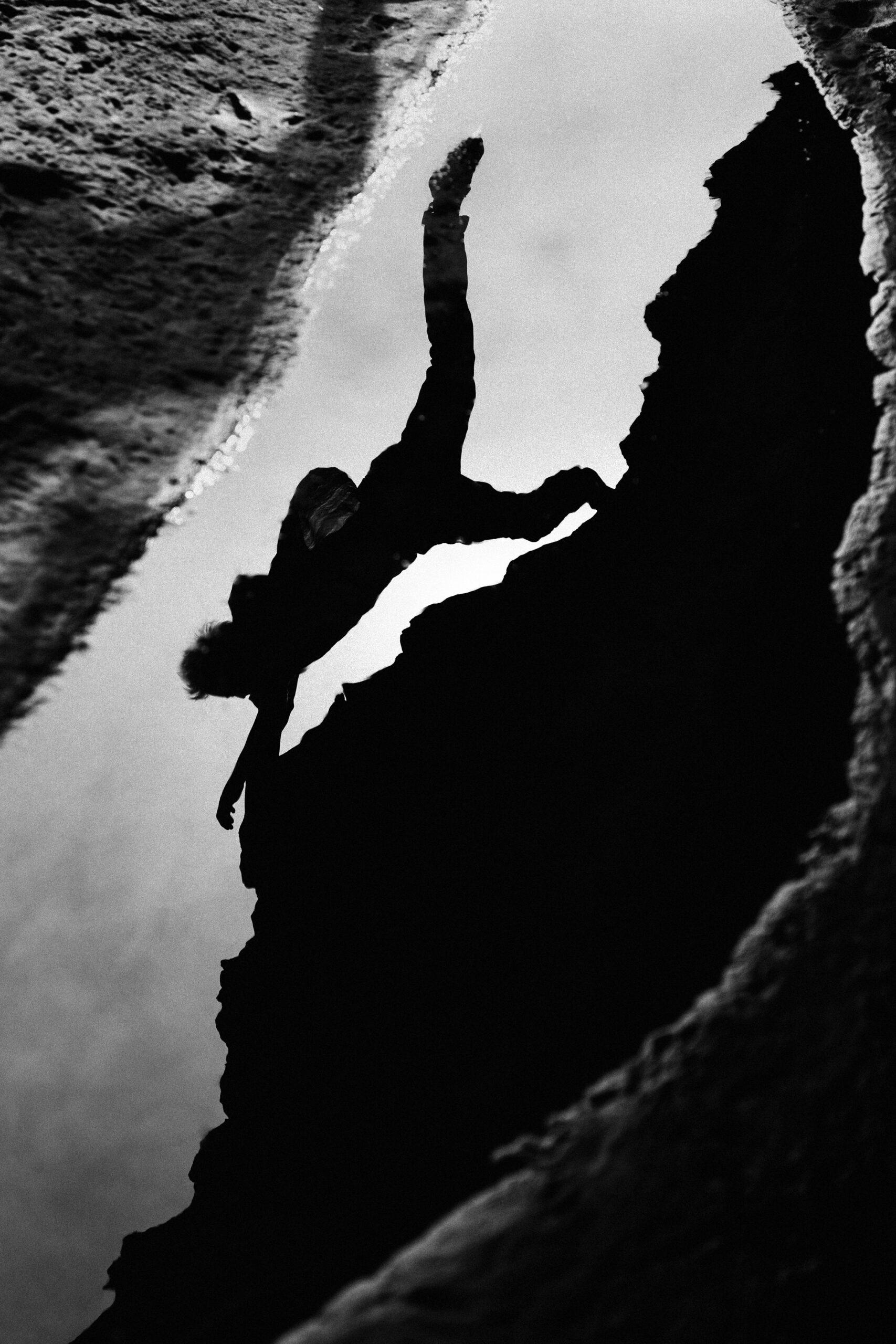
If you are born and raised in Versilia, Apuan Alps can only be a constant in your life: they dominate the landscape from practically any point, you see them driving, walking, surfing.
This is how photographer Filippo Maffei and SCARPA and Ferrino’s climber Luca Andreozzi met, united by having both grown up under the shadow of these fantastic mountains and by a passion for surfing and climbing. We meet in Filippo’s studio in Camaiore, a village wedged between the sea and the mountains from which some of the most popular rock faces in the area can be reached on foot in a few minutes. The studio is full of things, there are books by Richard Avedon and Henri Cartier-Bresson, but you immediately understand that Filippo’s playground is the sea: in addition to the volumes by Chris Burkard and Todd Glaser, there are also a thousand magazines dedicated to the world of surfing and skateboarding. After all, Filippo made his bones, even as a photographer, in the water, following athletes and shooting campaigns. On‘the huge work table there are the ten prints of the project that Filippo and Luca created together, Lines in the Mindshots of great visual impact that draw a line between two worlds, surfing and‘climbing, which were exhibited at the Manifattura Tabacchi in Florence. A line unites them, and for both of them the line is a fundamental element of the athletic gesture, whether it is a route or a wave. Luca, who surfs and started climbing at a very young age, made this connection explicit thanks to Filippo. The first time on the wall for him was at the age of five, wearing old shoes from his father who, taken out of exhaustion by so many requests, accompanied him to climb. As soon as Luca touched the rock for the first time, he immediately understood that climbing would guide his entire life, only that at the time there were no gyms, or schools, as widespread as now and probably his approach to climbing now depends right from that. There were no other children climbing: Luca had to invent how and when to practice A long journey that led him first to Turin, where he learned to draw indoor lines, and then to Florence, where he opened Area 51, his own climbing gym.
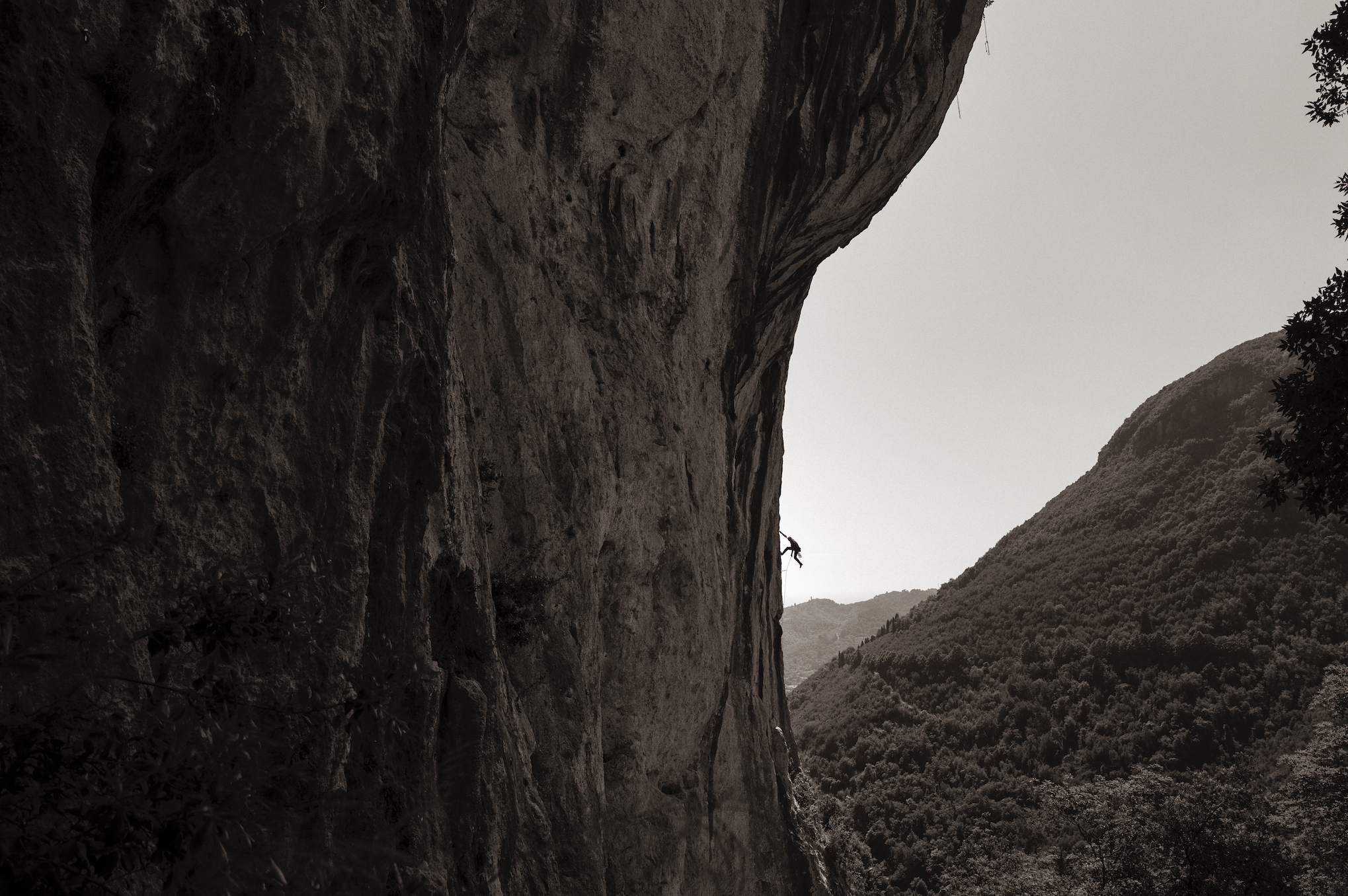
We are around the table, their project is there and you can feel how much passion they both feel for these worlds, which they have united together.
Filippo: I’ve spent practically all my life by sea, but Apuan Alps were always there, looking at me and exercising this enormous fascination on me. I used to go to quarries a lot for shooting reasons, but I had never tried climbing until recently, and the more this passion grew in me, the more I felt and grasped affinities with surfing. I began to visit the Candalla area assiduously and so I met Luca, who involved me by making grow‘that need in me to try to climb those walls, which for me is an essential thing: whether it is water or rock I want to have the same perspective‘as the athlete, share the same physical effort and the same element. My goal in following Luca on the face was to get as close as possible to what he himself sees it. The feeling between us was immediate: we took the first shots in Calafuria, near Livorno, a whole afternoon in which he climbed and I shot in total silence, with only the waves of the sea in the background.
Luca: When we started shooting, immediately came out the photos that would then become the exhibition, I had just put on my shoes and I was just warming up, while Filippo had started taking test shots. The harmony was immediately total, as if we had known each other for a lifetime.
Filippo: What I liked about Luca right from the start is his approach to climbing. Yes, he is technical, because he is very strong, but he also has his own artistic style. It’s his own way of experiencing the mountain, with Ray-Ban, jeans and hair all over the place.
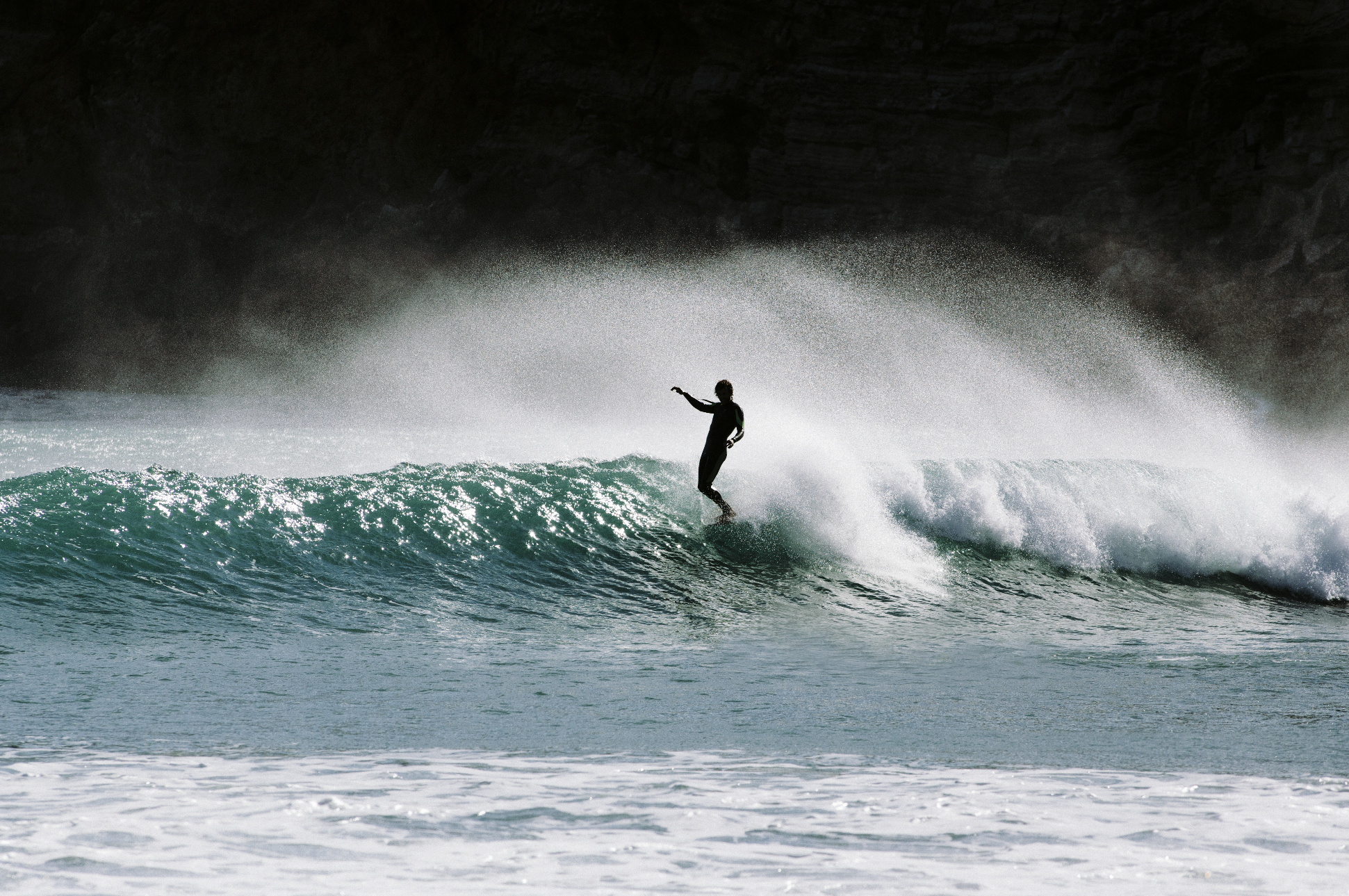
Luca: I’ve been climbing all my life but, especially in recent years, I have tried to do things that truly reflect me, to give my vision of climbing. For me it is yes a sport, but also a way of being and exercising my creativity. I dressed in an atypical way compared to the classic climber precisely for this reason, because I have always liked to give it my personal touch: today, for my tastes, the emphasis is placed too much on performance and we’re losing all the facets that for me are essential when it comes to climbing. In the gym I see people climbing every day, and it is clear how the freedom approach of this sport is going to be lost: it’s all numbers, grades, codifications. Breaking the mold a little was great, Filippo put my vision of climbing on film.
Filippo: We both come from the world of surfing and skateboarding, which is a well-rounded lifestyle, these are not “just sports”, but they embody worlds. Even just the fact of turning to look for the right spot to be able to express yourself at best is something that belongs very much to the surf culture, or street skate, in which you have to choose where to practice and then find the way to place the functional lights for the shot: it is something that differs a lot from hard and pure performance. Thanks to Luca I discovered where to climb close to home, both on Apuan Alps and on Romito, a particularly unusual location even for locals. It allstarted with my request to find a spot from which you could see the sea.
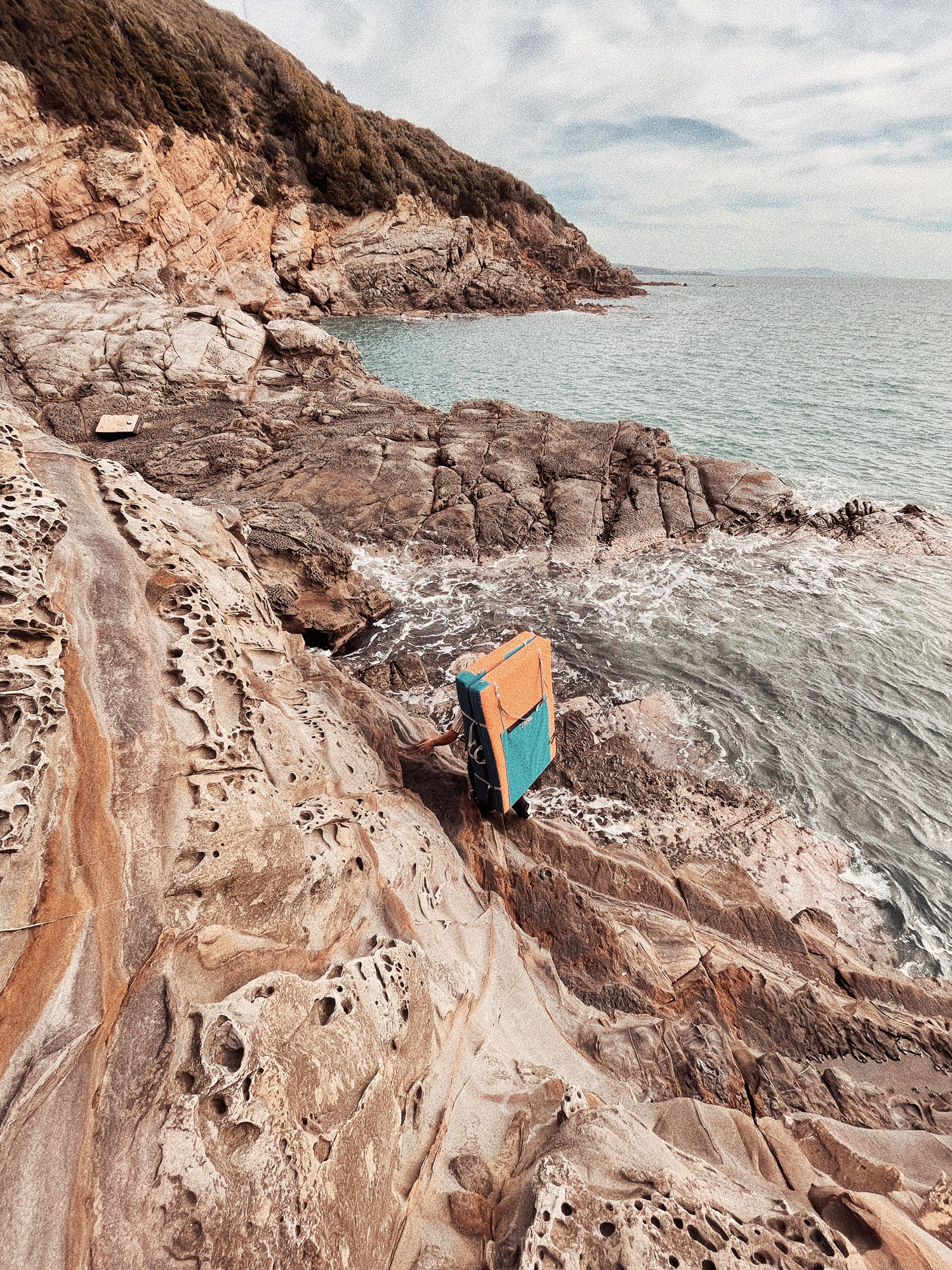

Luca: Here, creativity in climbing for me lies precisely in this, in where to go to look for climbing: this is an indication of a research process that is very, very creative. Usually we tend to always go to the same places, where everything has already been discovered, already cataloged, already done and we simply go to play sports, then repeat a gesture. For me, however, climbing is not this, but a process of research and adventure: to see a line where no one has ever seen it, or to look for it where no one has ever even wanted to look, as in the case of Calafuria, which is a place totally off the maps of climbing. It is a place that has natural shapes and crazy lines, where I have been going for years to look for new toys, so when Filippo told me about the project I had no doubts. But even in Camaiore itself, which is certainly not unprecedented in the sport climbing panorama, we went in search of lines that were mainly aesthetic, not giving a damn about technical information or grades. On the contrary, I made Filippo choose the lines that captured his photographer’s eye.
Filippo: Betweenclimbing and surfing there are many connections, starting from the more mental aspects up to the purely physical ones, from the concentration, which both disciplines require, up to the fact of being totally immersed in an element that is bigger than you, be it the sea or the mountain, which requires you to have a deep respect. You are alone with yourself and in contrast with this element with which you have to find a balance, you have to find a way to deal with it, a line. You have to find a line whether you are riding a wave or whether you have to get to the top of a wall and you have to have it in your head before putting yourself into it, you must first visualize it and then put it into practice.
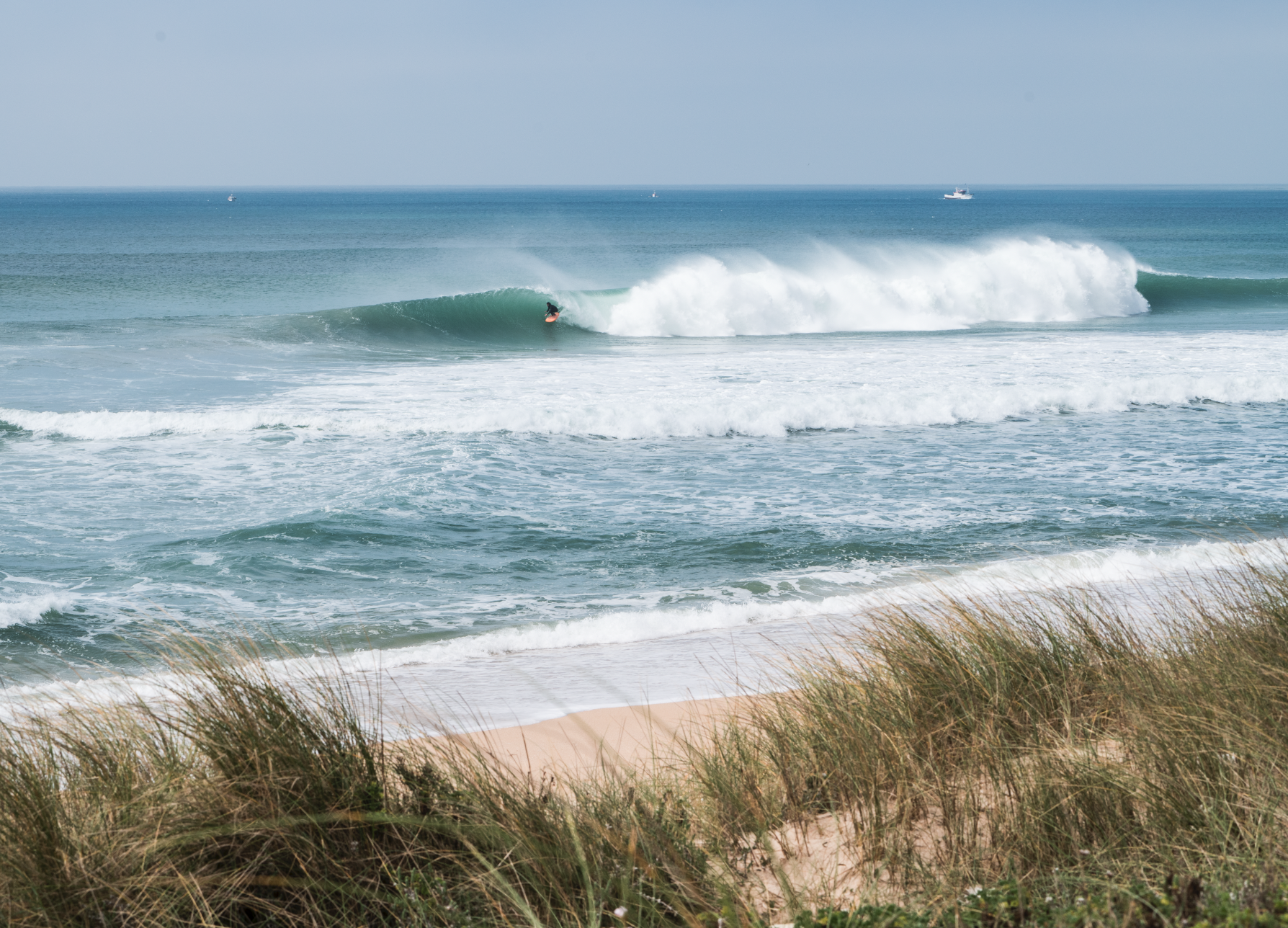
Luca: If there is a union between surfing and climbing this comes out clearly in Filippo’s work, we both surf, we both come from Versilia and we both have found our way to tell about climbing, which for us is very close to the mood and the philosophy of surfing. It is a very fascinating combination: if you think about it, climbing, just like surfing, is an activity that can be experienced in many different ways, but it certainly calls you to stay outside, in nature. In one case it’s just you, the board and the wave, in the other just you, the rock and your shoes. If you live it as we lived it, it is just like being at sea and having to choose which wave to take: choose the line you like, the one that captures you, and climb it, without thinking about the grade of difficulty or the technical aspects that a climber normally would look for. In this the approach, the two disciplines are similar and then they are both individual sports, where however you share the same element with others: the fact that you are there, both doing the same thing, makes you somehow accomplices.
